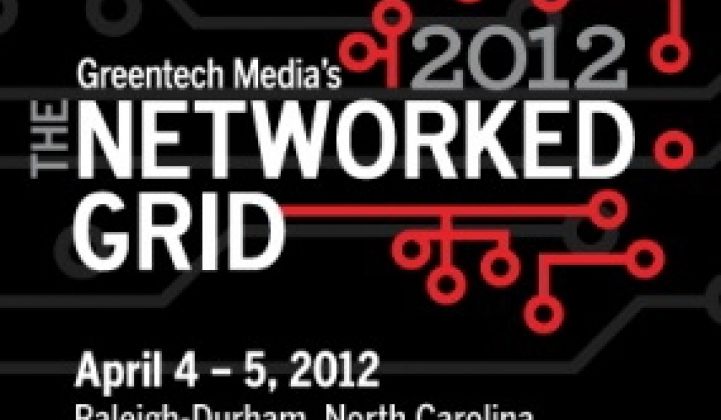At San Diego Gas & Electric, the smart grid team didn’t sit around envisioning a day when they would set up contests to get their customers excited about energy efficiency. But that is exactly what the utility did as part of the Biggest Energy Saver contest, where residential customers compete for prizes by shaving kilowatt-hours.
“Once you have a platform, you can do things beyond [what was in the business case],” Lee Krevat, director of smart grid at San Diego Gas & Electric, said at The Networked Grid conference.
The business case for smart grid for each utility is unique, but there are commonalities. Progress Energy had installed automatic meter reading in the past few years, so the business case for two-way meters wasn’t justified, since they had already reduced truck rolls.
The utility has been aggressive about distribution automation, however, and will be able to get more than 300 megawatts of demand response through voltage reduction. Because of the automation in the distribution circuit, Progress can locate a fault on a feeder within two power pole spans. Becky Harrison, director of smart grid technology and outreach at Progress Energy, said that level of detail was not one of the value propositions the utility had recognized when it initially made its business case.
For each of the utility representatives discussing lessons learned from smart grid projects, they each came back to the people, processes and platforms that have allowed their companies to reap benefits from the start of their deployment that have exceeded their own expectations.
Here are some of the lessons that can and should be applied in any utility that is investing in transforming its grid and its business.
Create a project culture. Don Denton of Duke Energy said that the utility has challenged its teams to look for the value of what’s coming next, and that will likely come from the data that is now flowing off of projects. It’s important to constantly be looking at your projects and trying to understand how you can use analytics to squeeze more value from every facet of the project. He noted that constant adaptation will have to become the new norm for utilities.
Benchmark and share. Duke Energy’s Denton also noted that to truly create value, there’s going to have to be shared lessons across utilities and then with regulators. He did not have a clear-cut suggestion on how to create the network for utilities to do this, but he’s not alone in his thinking. Tony Tewelis of Arizona Public Service agreed. “Even though we’re very different utilities, we need to share what we’re doing,” he said. “It’s not only the technologies; it’s how you make the business transformation.”
Break down silos. Do your OT workers know your IT guys (or gals)? Are you getting various departments into the same room to better understand how grid investments will touch each area of the business? It is not an added bonus; it is an imperative. Krevat of SDG&E said that the utility created an education, training and communication group. It is a group of 200 people across the organization that takes project information back to their group to get feedback. The result is that no group is left out of the changes that are happening, or how those changes can be leveraged within their specific department.
Get serious about IT investment. Whether it’s integrated DMS and OMS systems or updated customer billing, some of the most innovative utilities are making massive investments in IT. Consolidated Edison, which serves New York, is not doing a lot in the customer-facing grid compared to others like SDG&E, but it is still making huge investments in IT to help drive decisions on how to modernize its distribution grid. For Austin Energy, IT upgrades allowed the utility to expand the rate structures it offers its customers, which can help drive down peak load.
Put the customer first. No matter what project is happening at SDG&E, even if it’s updating a substation, it always has a customer component, according to Krevat. Con Edison has put a huge focus on social media to keep in touch with its customers. Duke's Denton added that transforming the business culture, which includes becoming far more customer-centric, means that utilities must look to industries besides their own for inspiration and guidance. “You have to understand that it’s the customer that drives your business,” said Krevat. “It has to start and end with the customer.”



